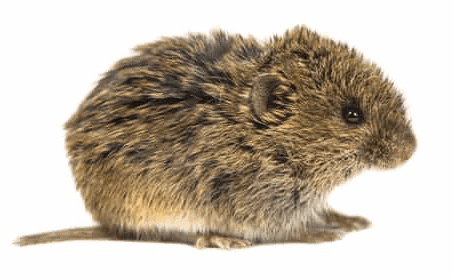Comprehensive Bug Control Provider to Fight Vole Infestations
By employing a combination of recognition, exclusion, environment, and capturing modification techniques, professional parasite control solutions can provide a tailored option to deal with vole infestations. The crucial lies in applying a well-shaped strategy that not just gets rid of existing voles however also develops lasting control procedures to secure against future intrusions.
Vole Recognition and Assessment
When inspecting for voles, look for their particular runways, burrow openings, and nibbled plant roots. Chomped plant origins are an additional indicator of vole activity, suggesting their visibility and possible damage to plant life. By properly recognizing these indicators, parasite control professionals can customize their techniques to successfully manage vole invasions and safeguard gardens and backyards from additional damage.

Trapping and Elimination Methods
Efficient parasite control techniques for handling vole infestations frequently include using specialized capturing and removal strategies. Trapping is an extensively used method to catch voles and transfer them away from properties.
When establishing traps, it is vital to guarantee they are placed appropriately and baited with vole-preferred food resources like peanut butter, seeds, or fruits. On a regular basis examining the catches is necessary to without delay eliminate captured voles and prevent distress or injury to the pets. When entraped, voles must be relocated to suitable environments much from human houses to stay clear of re-infestation.
In addition, exclusion methods, such as setting up barriers or fencing underground, can assist hinder voles from accessing specific areas. Proper disposal of caught voles and regular tracking of vole activity are important parts of an efficient capturing and removal method in vole invasion administration.
Exclusion and Barrier Methods

By dealing with these susceptabilities and executing targeted exclusion and barrier actions, residential or commercial property owners can dramatically decrease the danger of vole problems. Eventually, a combination of trapping, removal, and positive exemption measures can aid successfully handle vole populations and safeguard buildings from invasions.
Habitat Alteration and Avoidance
To alleviate vole infestations, habitat alteration and avoidance approaches concentrate on changing the atmosphere to prevent vole habitation. Additionally, decreasing excess moisture by taking care of leaking pipelines, ensuring proper drainage, and getting rid of standing water can make the setting much less friendly for voles.
Incorporating barriers like learn this here now crushed rock boundaries or cord mesh underground can additionally avoid voles from tunneling right into yards or lawns. These physical obstacles disrupt their capacity to passage and access preferred areas. Growing vole-resistant plants and utilizing vole-repellent techniques such as castor oil-based deterrents can even more discourage vole task. By executing these habitat alterations and avoidance steps, residential or commercial property proprietors can proactively decrease the threat of vole invasions and shield their exterior spaces from damages. utah vole control.
Monitoring and Follow-Up Techniques

Follow-up techniques involve revisiting the dealt with locations to examine for any type of indicators of vole task. Checking stations, traps, and visual inspections are generally made use of methods to assess the success of the bug control procedures. By routinely inspecting these locations, bug control experts can rapidly recognize any kind of revival of vole task and take positive steps to attend to the concern prior to directory it escalates.
Additionally, documenting the outcomes of tracking and follow-up tasks is vital for tracking the progress of vole problem control in time. These documents aid in determining fads, examining the efficiency of different control methods, and making educated decisions for future insect administration methods. Regular follow-up treatments not just assist in stopping vole re-infestations yet also add to the general success of bug control efforts.
Conclusion
In verdict, thorough pest control services are crucial for effectively combating vole problems. By determining and examining vole populaces, implementing trapping and removal techniques, making use of exemption and barrier approaches, modifying environments, and applying surveillance and follow-up techniques, homeowner can more helpful hints successfully handle and avoid future invasions. It is vital to attend to vole invasions quickly to stay clear of damage to home and possible health and wellness dangers.
By utilizing a combination of recognition, habitat, capturing, and exclusion adjustment methods, specialist insect control solutions can provide a customized option to combat vole infestations (vole control service). By properly recognizing these indications, bug control professionals can tailor their approaches to effectively take care of vole problems and safeguard yards and lawns from further injury
Effective insect control strategies for taking care of vole invasions frequently include utilizing specialized capturing and elimination methods.To alleviate vole problems, habitat alteration and prevention approaches focus on changing the setting to prevent vole habitation.Normal monitoring and follow-up treatments are essential in preserving vole invasion control measures and making certain long-lasting success in pest monitoring.